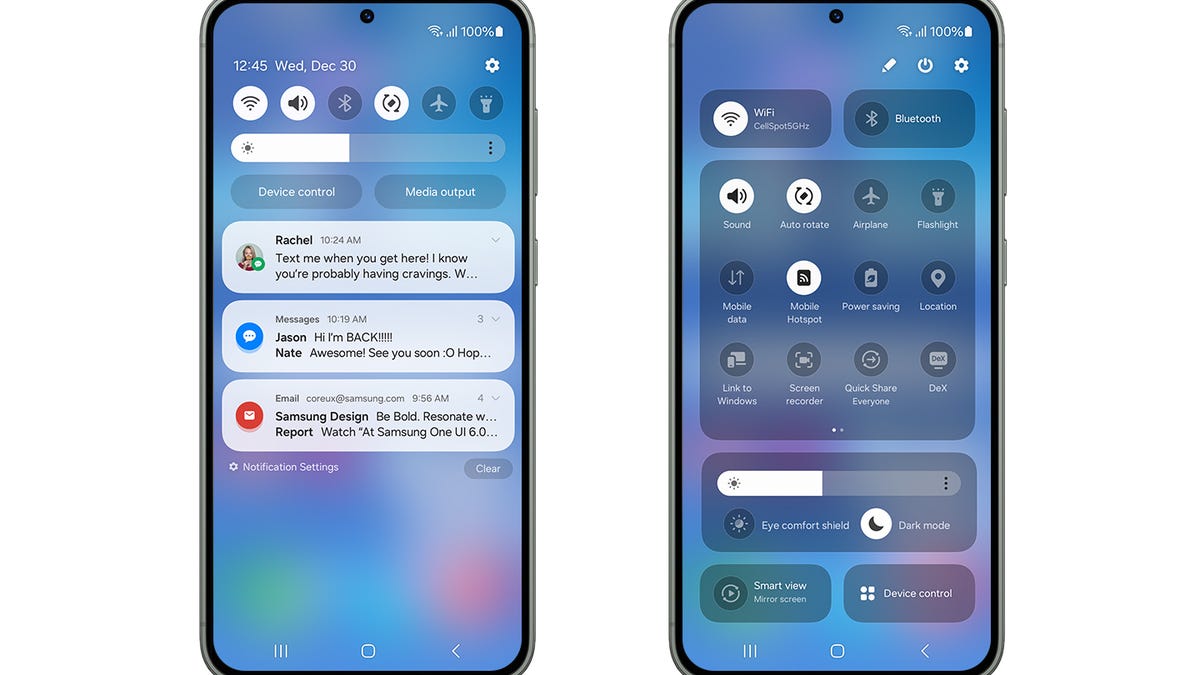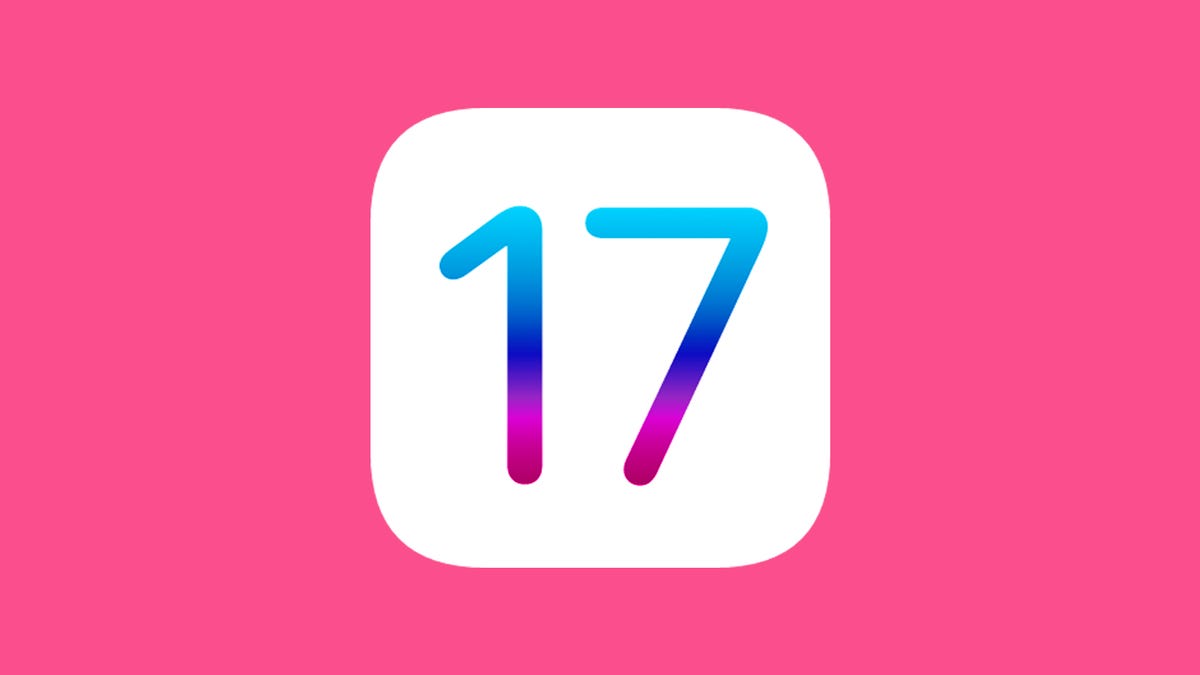14 favorite smartphones to buy in 2023 | ENBLE
14 favorite smartphones to buy in 2023 | ENBLE
The Best Phones in 2023
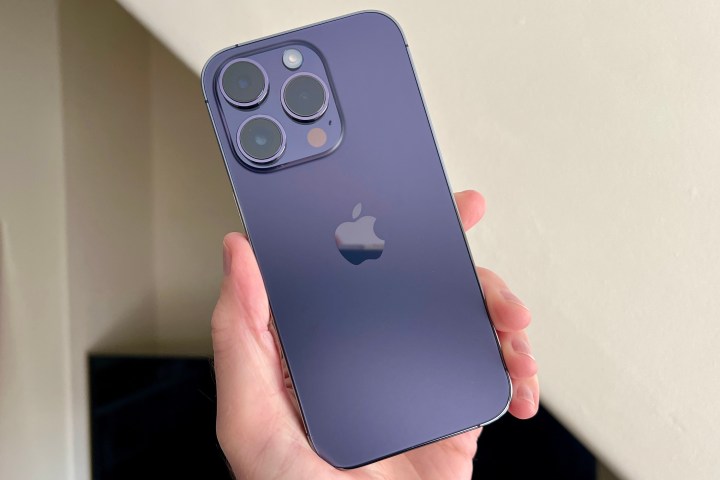
What’s the best phone in 2023? It may seem like a simple question, but it’s anything but. Smartphones are so good these days, and while it’s great having so many excellent options to choose from, it also means that finding the perfect one for you can be a challenge.
That’s why we’re here to help. Below, you’ll find our picks for the best phones you can buy right now. Whether you’re a longtime iPhone fan, a die-hard Android user, or open to any smartphone, we think you’ll find something on this list that’ll suit you perfectly.
If you have stronger preferences you want to stick with, see our picks for the best Android phones and the best iPhones. Otherwise, keep reading to see what we think are the best phones in 2023.
Apple iPhone 14 Pro
Best phone for iOS
Why you should buy this: It’s the best iOS smartphone around, with outstanding performance, high-quality good looks, and powerful software.
Who it’s for: Anyone who wants the best iPhone money can buy.
Why we picked the iPhone 14 Pro:
If you can afford it, the iPhone 14 Pro is absolutely the best iOS smartphone around right now. Apple has done it again, improving on the iPhone 13 Pro with a range of tweaks and upgrades, ensuring the iPhone 14 Pro is a must-buy. With top-notch performance, a stunning display, versatile cameras, and some exciting new additions, the iPhone 14 Pro is a triumph for Apple.
Starting with the design, it may look like not much has changed, and you’d be right in thinking so. The iPhone 14 Pro boasts the same flat, angular design, stainless steel frame, and toughened glass on the back as the iPhone 13 Pro. This time around, those buying the phone in the U.S. will notice the lack of SIM tray — this is Apple’s first iPhone that’s eSIM only.
The notch has gone too, replaced by a pill-shaped section at the top of the screen that Apple calls the Dynamic Island. Right now, this is fairly simple, and it only expands to show information on timers, face unlock alerts, Bluetooth connections, and screen and voice recordings — but consider it a work in progress. Speaking of the display, the 6.1-inch Super Retina XDR screen has a 120Hz refresh rate with Apple’s ProMotion, a feature you won’t find on the basic iPhone 14. You get up to 1,600 nits of brightness and a boost to 2,000 in bright outdoor sunlight — a handy bump — and Ceramic Shield protecting the display.
Apple’s always-on display not only looks great but comes in handy too, with notification alerts, dynamic widgets, and the time and date over your choice of wallpaper. A quick tap wakes controls for audio and music apps, though it’s true the feature might not be good news for battery life. You can turn it off, though, if you like.
This time around, Apple’s offering the iPhone 14 Pro in Space Black, gold, silver, or the gorgeous Deep Purple colorway that looks simply stunning.
Under the hood, the iPhone 14 Pro doesn’t disappoint either, with Apple’s new A16 Bionic processor giving you another reason to choose the Pro model over the standard iPhone 14. Though there’s no immediately noticeable performance boost compared to the A15 chip, you’re getting Apple’s latest and most powerful processor, which will handle anything you throw at it. Apple’s solid update record ensures it’ll stay that way for years to come, too. Storage options range from 128GB to 1TB, giving you ample room for photos, videos, and apps.
Where the iPhone 14 Pro falters slightly is battery life. Though it settles down once it gets to know your usage habits, don’t expect the battery to see you through two days, and prepare to carry a battery pack or make plans for top-up charging with heavy use. There’s no charger in the box, just a USB Type-C to Lightning cable, and with a 29W charger, you should see the battery reach full in around an hour. That’s consistent with Samsung’s flagships but a far cry from the fast charging on offer from some other brands.
The phone’s cameras are excellent too, and even the subtle enhancements on offer make a noticeable difference. The 12-megapixel wide-angle lens and 12MP telephoto lenses are still there, with a 48MP main this time around, ensuring plenty of detail and strong color accuracy. You can also shoot video in up to 4K resolution at 60 frames per second (fps).
The Apple iPhone 14 Pro is a must if you want the best from Apple, though it doesn’t come cheap. Prices start from $999, but you can also find it on almost every major U.S. carrier. It’s truly the best smartphone you can currently buy.
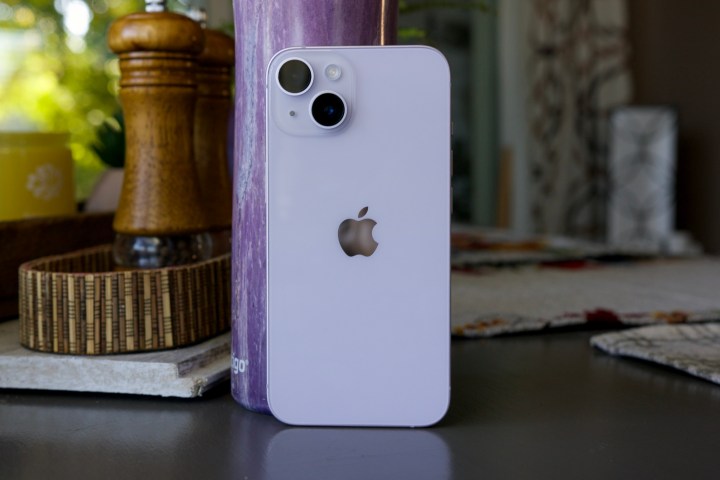
Apple iPhone 14
Best phone for iOS runner-up
Though the iPhone 14 Pro snagged our top iPhone spot, its weakness may be its price. It isn’t actually that much better than its lower-priced sibling, the iPhone 14, though it does boast a few key additions and improvements.
At $799, the iPhone 14 offers a similar high-end build, 5G connectivity, dependable (though not excellent) battery life, and the latest iOS 16. This time around though, Apple’s left the latest A16 Bionic processor to the Pro and Pro Max models, so the iPhone 14 sticks with the A15 chip. There really isn’t a noticeable difference in performance here, with the A15 able to handle everything you throw at it, and then some.
You’re missing out on the 120Hz ProMotion display, though, with only a 60Hz refresh rate on offer. It might be an issue if you play the latest, most demanding games on your phone, but bear in mind you’re saving $200 or more over the Pro model. You’ll also miss out on features like the always-on display and Apple’s Dynamic Island, only coming to the iPhone 14 Pro and Pro Max — the iPhone 14 retains the familiar notch and looks a lot like its predecessor, the iPhone 13.
The cameras here are mostly unchanged from the iPhone 13 — though the main camera boasts a slightly wider aperture — with some fairly modest enhancements compared to the almost entirely new camera system of the iPhone 14 Pro.
Ultimately, it comes down to whether these new features and improvements are worth the extra $200 to you. The opportunity to save that cash might be one that’s hard to turn down.
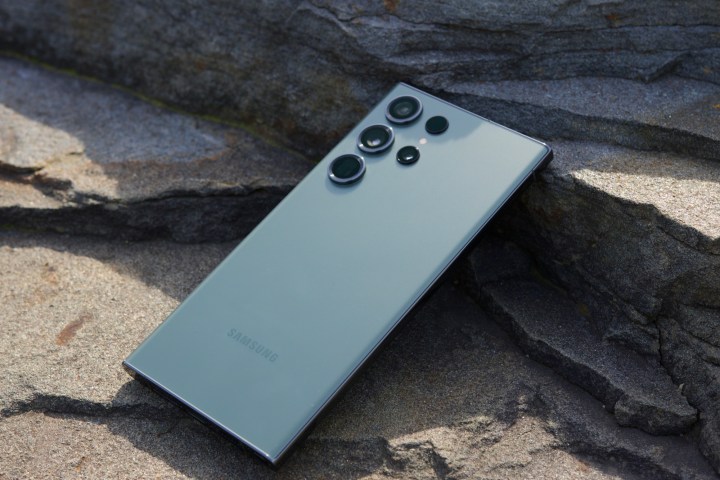
Samsung Galaxy S23 Ultra
Best phone for Android
Why you should buy this: Samsung has somehow topped last year’s S22 Ultra to create a truly sublime smartphone.
Who it’s for: Anyone looking for the best Android has to offer.
Why we picked the Samsung Galaxy S23 Ultra:
You’d be forgiven for thinking the Samsung Galaxy S23 Ultra could be a bit of a boring update. After all, Samsung wasn’t changing the design or doing anything drastic with the S22 Ultra’s basic formula — but it turned out all the S22 Ultra needed to become truly incredible was a few tweaks. The S23 Ultra may not be a paradigm shift, but it is an excellent phone and our pick for the best Android smartphone.
It’s safe to say it’s a gorgeous phone, with soft curves around the edges and a flat top and bottom. The S Pen has a dock at the bottom, and the massive 6.8-inch Super Dynamic AMOLED 2X display is broken only by a simple punch-hole for the selfie camera. Unlike most of the competition, the rear camera module isn’t separated from the rest of the back, and it gives the device a clean design language of its own. The color choices are as subtle or stylish as you want them to be, and it’s all backed up with Gorilla Glass Victus 2, Samsung’s Armor Aluminum, and an IP68-rating for dust and water resistance.
We’ve seen the Snapdragon 8 Gen 2 in other phones, like the OnePlus 11 below, but the processor goes up to a new level in the S23 Ultra. It’s the “Snapdragon 8 Gen 2 for Galaxy” now, which basically means it’s been overclocked and optimized for Samsung’s devices. Does that make a difference? As it turns out, yes. We couldn’t do much to faze this processor, and it handled everything we threw at it. Add in the generous amounts of RAM and storage, and you have a performance powerhouse that should last for years.
The camera is another incremental upgrade, and the hardware improvements are largely confined to upgrading the main lens to 200MP. This makes a difference to image quality (and the S23 Ultra produces exceptional pictures), but the biggest wow factor comes from the improved zoom. Like the S22 Ultra, the S23 Ultra has a 3x telephoto lens and a 10x periscope telephoto lens, and both have been improved. The 30x digital zoom has really been upgraded though, and it’s moving from being a “fun, but underwhelming” feature to something that actually creates good images. It’s quite astounding, and there’s no other smartphone that offers this level of zoom photography.
Everything else is just as good. The S Pen continues to be an excellent stylus, and Samsung’s One UI skin has grown into a strong version of Android. The desktop-emulating DeX mode is still here, and so is a swathe of other extra features you can explore at your leisure.
The battery is solid and can last two days with moderate use. Even more intensive use will see it last a full day with some change at the end. It’s impressive endurance. Charging tops out at 45W, which should refill your battery in about an hour, though there’s no charger in the box, so you’ll need to buy your own. There’s also support for wireless charging and reverse wireless charging too.
The Samsung Galaxy S23 Ultra starts at $1,200, with 256GB of storage, so it’ll cost you quite a lot of money. However, with some exceptional cameras, stupendous processing power, and two days of battery life, it’s fair to say this is a phone that can easily last you for many years before needing to be replaced.
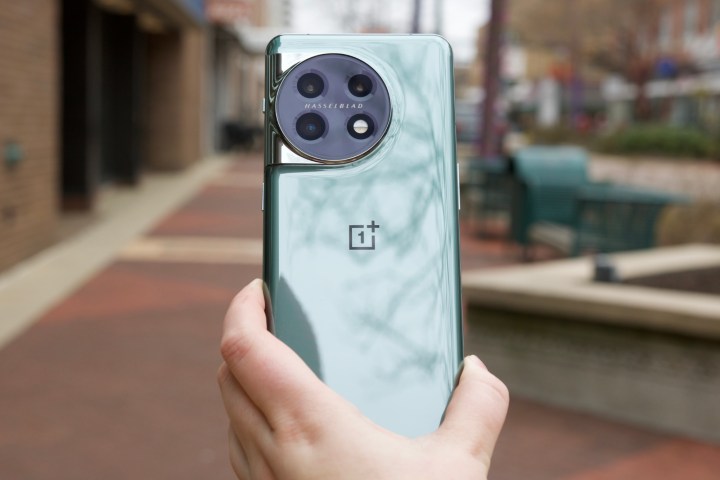
OnePlus 11
Best phone for Android runner-up
Why you should buy this: This is OnePlus’s best smartphone in years, delivering a flagship experience and outstanding bang for your buck.
Who it’s for: Someone who wants an outstanding Android smartphone that doesn’t cost a fortune.
Why we picked the OnePlus 11:
The Samsung Galaxy S23 Ultra is an incredible phone in so many ways, but not far behind it is the OnePlus 11. This is a successor to the OnePlus 10T, a phone that left us feeling worried and uncertain about OnePlus’s future. But OnePlus clearly listened to feedback on the 10T because the OnePlus 11 is so excellent in so many ways.
Hardware-wise, the OnePlus 11 looks and feels great. The camera design is polarizing, but it’s also unique and unlike anything else on the market. The phone feels incredible to hold, too, thanks to a stainless steel frame and glass backside. And, yes, the alert slider is back on the OnePlus 11 — allowing you to easily adjust notification sounds with a physical switch.
But it’s what’s beneath the OnePlus 11’s design that makes it so special. Powering the phone is Qualcomm’s Snapdragon 8 Gen 2 chipset. Simply put, it’s a beast. Apps open instantly, it powers through graphically intense games without heating up, and it’s wonderfully battery efficient — easily getting through two days of use on a single charge. And when your battery does run out, 80W charging gets you from 0% to 100% in about 30 minutes.
Just as impressive is the OnePlus 11’s camera system. The 50MP main camera delivers lovely results, producing images that are eye-catching and full of character. And thanks to the 6.7-inch AMOLED display, you have an excellent canvas for looking at your images, favorite websites, movies, or anything else.
What are the downsides? The OnePlus 11 only has an IP64 rating for dust and water resistance, meaning it isn’t as well safeguarded against water as the S23 Ultra. It also lacks wireless charging, and the 32MP telephoto camera has a paltry 2x optical zoom — resulting in pretty disappointing zoom performance. The upside to all of this is that the OnePlus 11 starts at just $699. If you want an amazing Android phone but can’t stomach the price of the Galaxy S23 Ultra, the OnePlus 11 is the way to go.
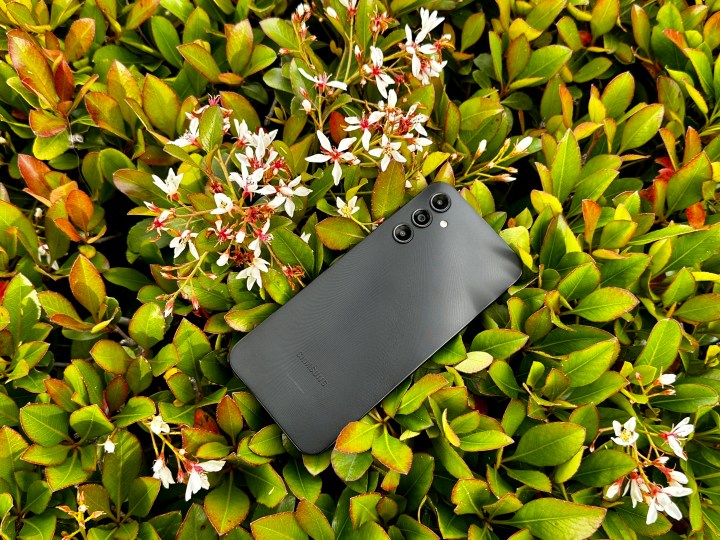
Samsung Galaxy A14 5G
Best cheap phone
Why you should buy this: The Samsung Galaxy A14 5G looks good and packs a punch for a budget price.
Who it’s for: Buyers on a budget looking for a safe, sensible choice that won’t disappoint.
Why we picked the Samsung Galaxy A14 5G:
Are you on a budget but want great value? Then you can’t go wrong with Samsung’s A-Series phones, which are excellent for the price. The Galaxy A14 5G is one of the latest entries in the family, and it’s well worth your attention.
With the Galaxy A14 5G, you get a large, 6.6-inch LCD display that has a 1080p resolution with a 90Hz adaptive refresh rate. Though you do get some bezels around the display, the screen itself looks nice, has vibrant colors, and you get relatively smooth scrolling with the 90Hz refresh rate. The design of the phone itself is simple and minimalistic, and the plastic back has a unique texture that helps give you more grip than the glass on most phones.
The A14 5G has 4GB RAM and a MediaTek MT6833 Dimensity 700 chip. So while it’s not packing the newest Snapdragon 8 Gen 2, it has decent performance for the price. You may notice a tiny bit of stutter when navigating the phone’s interface or opening up apps, but considering that the phone is just $200, it’s expected. It only comes with 64GB of storage, but that can expand to 1TB through a microSD card. Samsung ships the A14 5G with Android 13 and OneUI 5, and you will get two major Android upgrades and four years of security updates. For $200, you’re getting a good amount of longevity, especially considering that this phone is 5G-capable.
The camera is also quite impressive, as you get a 50MP main shooter, with a 2MP macro and 2MP depth sensors. Thanks to the MediaTek chip, taking photos is fast and the results are quite good for a $200 phone. When I used the phone to capture some in-motion shots of my daughter, the results came out quite well. Colors are also bright and punchy, like most of Samsung’s other higher-end phones.
And lastly, though the Galaxy A14 5G doesn’t have wireless charging, it does have a massive 5,000mAh battery that will last at least two days with regular use. But ENBLE charging caps out at 15W, so it’s a little slow. However, considering how much use you’ll get from a single charge, you may not be having to plug it in every night.
There are also four total color options for the Galaxy A14 5G, making it a fun phone for the price. It has the standard black and white options, as well as Awesome Violet and Awesome Lime Green. But the availability of the colors depends on where you live. If you’re in the U.S., you can only purchase the black version from all major carriers, and Samsung’s site has the black and Awesome Violet colors for U.S. customers. If you’re in the U.K., you can pick up a Galaxy A14 5G in all four colorways.
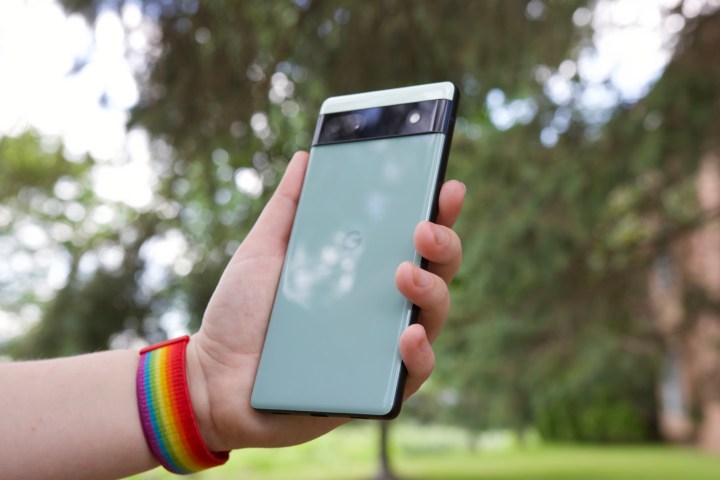
Google Pixel 6a
Best cheap phone runner-up
Why you should buy this: It has everything incredible about Google’s flagship cameras at a bargain price.
Who it’s for: Someone who prizes camera quality but doesn’t want to spend the earth.
Why we picked the Google Pixel 6a:
We’ve included the Pixel 6a on the strength of its camera, but don’t think that means the rest of the phone is weak. The Google Pixel 6a is an extremely strong smartphone for the price, with a flagship processor, compact design, and years of updates. But it’s the camera that really makes it stand out from the crowd.
At first glance, you’d expect the cameras to be a bit of a letdown. The Pixel 6a uses a pair of 12MP lenses: a main lens and an ultrawide lens. That’s much lower than the megapixel counts in most competing smartphones, but don’t rely just on the paper stats. The Pixel 6a takes well-balanced but vibrant shots in a range of lighting and expertly uses HDR to capture more challenging scenarios, like direct sunlight. The Night Sight mode isn’t as good as in more expensive Pixel phones, but it’s still good, especially at this price.
As mentioned, the rest of the phone is impressive too. The Pixel 6a uses the same Tensor chip found in the Pixel 6 and 6 Pro, so it has flagship-level performance and shouldn’t balk from any of the latest 3D games. It does run hot under load, though, so keep an eye on that. Battery life doesn’t shine as much, being limited to a single day. Charging is also fairly slow at just 18W.
The display looks good, thanks to the Full HD+ resolution. It is limited to a 60Hz refresh rate, which is a disappointment, but it’s otherwise fine for the price. The clean Android software is a big highlight, and so are the guaranteed updates for years to come.
Though the Google Pixel 7a is now available, we still recommend the Pixel 6a over the 7a. Why? Though the Pixel 7a has improvements like a 90Hz refresh rate display, the Tensor G2 chip, a 64MP main camera, and wireless charging, it’s honestly not that big of an improvement over the Pixel 6a — especially considering it’s $499. The Pixel 6a has a price cut down to $349, and you get a lot of bang for your buck.
And even though the camera is 64MP on the 7a, with all of the AI processing involved with photos, the Pixel 6a takes pictures just as well as the 7a. In fact, in our camera comparison between the Pixel 6a and the Pixel 7a, the differences, if any, were negligible. Plus, though the Pixel 7a has wireless charging, it’s not fast as it’s only 7.5W, which will take forever to charge up, and there’s also no reverse wireless charging. And even with the 90Hz refresh rate on the display, most people won’t notice the difference since it’s not much of a jump from the 60Hz on the Pixel 6a. If it were 120Hz, well, that would be a different story.
At the end of the day, the Pixel 7a is not worth $150 more than the Pixel 6a, so if you still want a very affordable Pixel phone, but also like saving some dough, then go with the Pixel 6a.
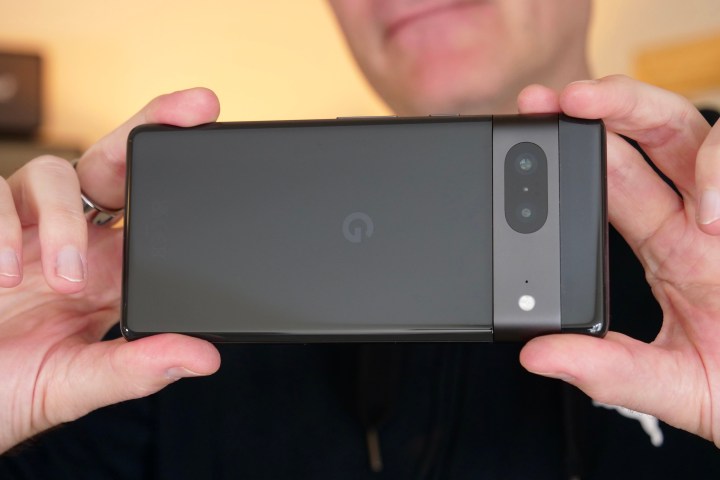
Google Pixel 7
Best phone value
Why you should buy this: It packs a superb camera, generous updates policy, and long battery life into a stunning form factor.
Who it’s for: Anyone looking for power, beauty, and flagship-level specs at an affordable price.
Why we picked the Google Pixel 7:
The Google Pixel 7 is an excellent choice if you’re on a budget but don’t want to compromise on specs. It shares the same sleek design as the Pixel 7 Pro, with a similarly outstanding camera, vibrant screen, and excellent battery life.
The Pixel 7’s glass and metal body looks a lot like the Pixel 6 at first glance, though there’s no two-tone finish to the rear this time, and the horizontal rear camera bar is aluminum, with both the front and back of the phone protected by tough Corning Gorilla Glass Victus. The 6.3-inch OLED display is a hair smaller than its predecessor’s 6.4-inch screen, and the 90Hz refresh rate is a little disappointing amongst a sea of 120Hz displays. With that said, the screen looks great and you’ll likely only notice the difference with heavy multitasking or while playing the latest games.
Under the hood, you’ll find Google’s latest Tensor G2 chip, which is built using a 5nm process, 8GB of RAM, and up to 256GB of storage. The phone runs Android 13 out of the box, with an expanded and more customizable Material You, packs an IP68 rating for water and dust resistance, boasts 5G connectivity, and will receive years of Android updates — plus, battery life is excellent.
The main reason to buy the Pixel 7, however, is the camera. You’re getting the same 50MP wide-angle, 12MP ultrawide, and 10.8MP ultrawide selfie lens as the Pixel 7 Pro, with all the familiar features from the Pixel 6 series, including Night Sight, Magic Eraser, Photo and Face Unblur, and more. The Pixel 7 allows you to take great shots effortlessly, in almost any lighting conditions.
True, charging is slow, gaming performance isn’t the best, and there have been reports of software bugs, but when you consider that the Google Pixel 7 starts from just $595, it’s easy to see why it’s such a solid choice.
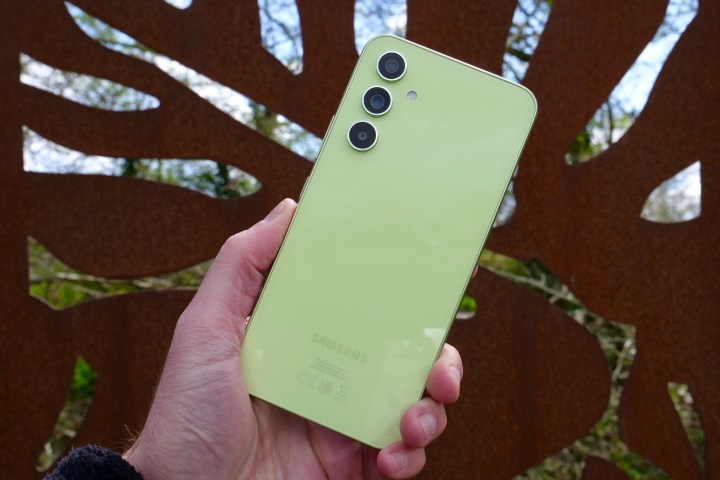
Samsung Galaxy A54
Best phone value runner-up
Why you should buy this: The Samsung Galaxy A



